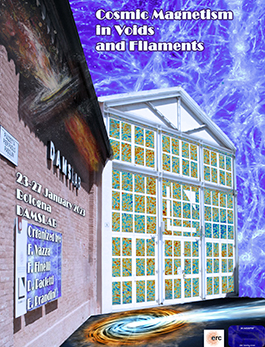Speaker
Description
We study the effect of a tangled sub-fG level intergalactic magnetic field (IGMF) on the electrostatic instability of a blazar-induced pair beam. Sufficiently strong IGMF may significantly deflect the TeV pair beams, which would reduce the flux of secondary cascade emission below the observational limits. A similar flux reduction may result from the electrostatic beam–plasma instability, which operates the best in the absence of IGMF. Considering IGMF with correlation lengths smaller than a kiloparsec, we find that weak magnetic fields increase the transverse momentum of the pair-beam particles, which dramatically reduces the linear growth rate of the electrostatic instability and hence the energy-loss rate of the pair beam. We show that the beam–plasma instability is eliminated as an effective energy-loss agent at a field strength three orders of magnitude below that needed to suppress the secondary cascade emission by magnetic deflection. For intermediate-strength IGMF, we do not know a viable process to explain the observed absence of GeV-scale cascade emission.

